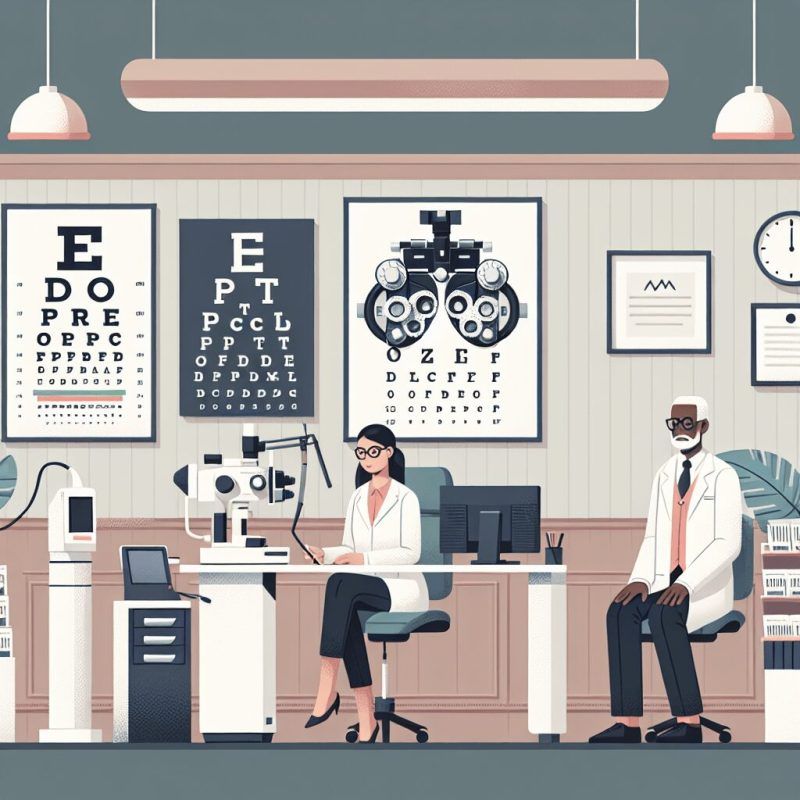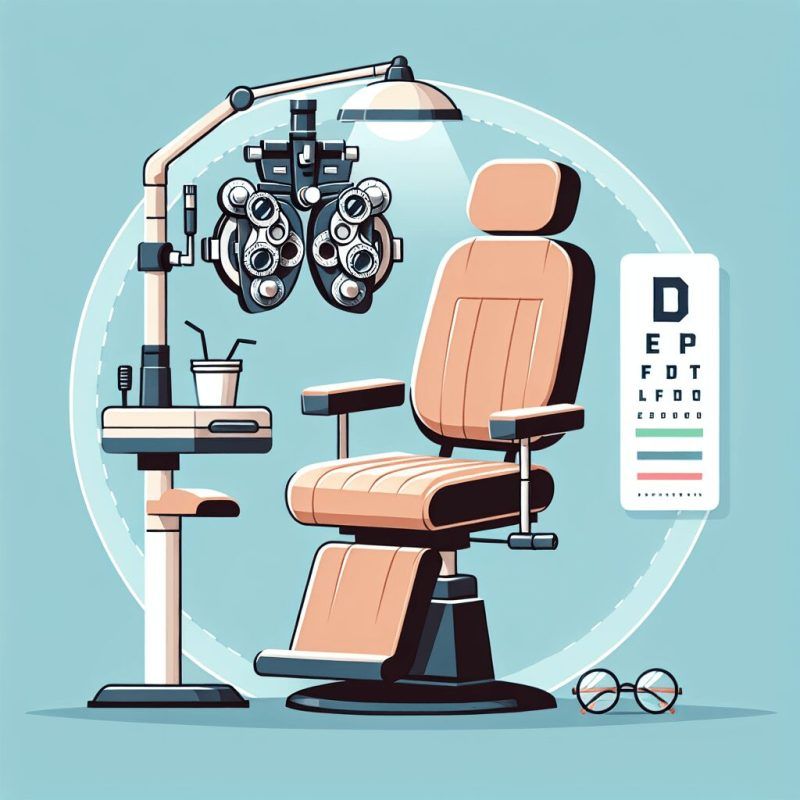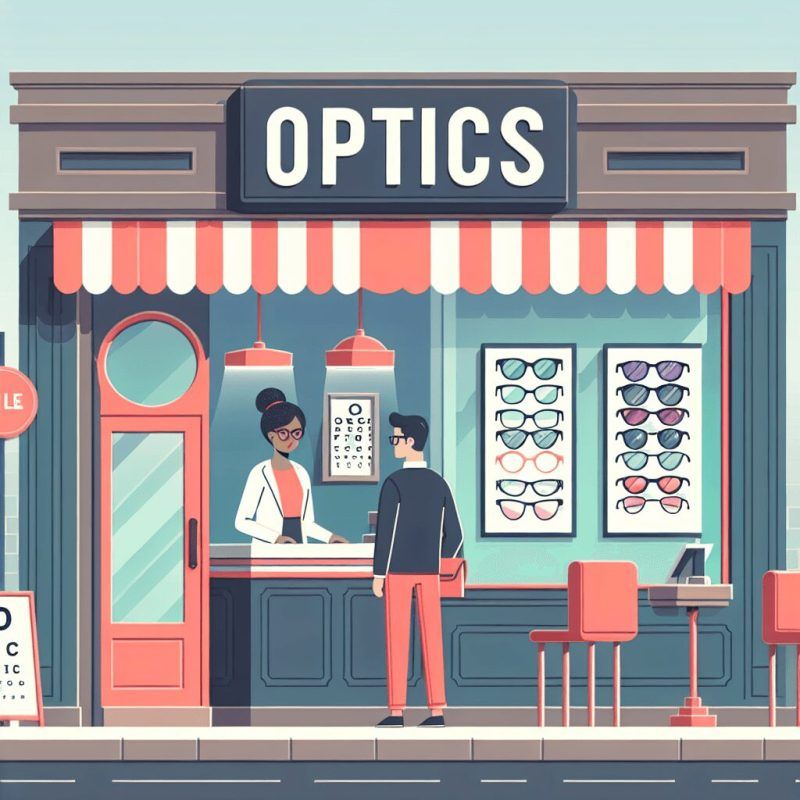Doctor's Corner
How to Determine Your Glasses Prescription
Do you have trouble reading signs or seeing things up close? It might be time to get your eyes checked for glasses. Knowing how to find the right prescription can improve your vision and quality of life. This article will guide you through determining the strength of lenses you need. Let’s start the journey to better vision!
Understanding Your Glasses Prescription
Which numbers indicate the prescription for your right and left eyes?
The prescription for the right eye typically includes numbers for sphere, cylinder, and axis. These numbers show how much vision correction is needed.
The numbers, along with the pupillary distance, help find the right lens power for clear vision.
The left eye’ s prescription also has similar numbers for correction, customized for that eye’s needs.
To tell the difference between the right and left eye prescriptions, look at the specific values for each eye.
The sphere number is for nearsightedness or farsightedness, while the cylinder number is for correcting astigmatism.
Understanding these differences is important for interpreting the prescription accurately and ensuring the best vision correction.
Regular vision checks and eye exams by an eye doctor or optometrist are important for eye health and keeping up with any changes in prescription.
Decoding the Meaning of “Sphere (SPH)” on Your Prescription
When you look at an eyeglass prescription , you might wonder what the “Sphere (SPH)” value means. This number shows how strong the lens needs to be for fixing nearsightedness or farsightedness.
A positive “Sphere (SPH)” value helps with farsightedness, and a negative one is for nearsightedness. This “Sphere (SPH)” value, together with the cylinder and axis for astigmatism, and the add power for multifocal lenses, make up the full eyeglass prescription.
Understanding the “Sphere (SPH)” value is important when picking the right prescription lenses for the best vision correction. It’s best to see an eye doctor for a complete eye check-up to get all the prescription details right, like the sphere, cylinder, and lens power. This helps ensure clear vision and good eye health.
Understanding the “Cylinder (CYL)” Number on Your Prescription
The “Cylinder (CYL)” number on your prescription shows how much astigmatism correction your eyes need. This correction helps fix any irregularities in your cornea’s shape that can make your vision blurry at different distances.
If the “CYL” number is too high or too low, it can affect how well you see details and sharpness. Understanding how this number impacts your glasses prescription is important for getting the best vision correction.
Make sure to talk to your eye doctor or optometrist to understand your prescription details, including the “CYL” number. Knowing this will help you choose the right lenses with the correct power to treat astigmatism effectively.
Remember to have regular eye exams to keep track of any vision changes and overall eye health, especially if you wear contact lenses or have worries about your eyes.
Exploring the Axis and Add Values in Your Prescription
To determine the axis and add values in your eyeglass prescription, it’s best to consult with an eye doctor. They will conduct a thorough eye exam to evaluate your vision and establish the specific details needed for your glasses.
-
The axis in your prescription reveals the orientation of astigmatism.
-
The add value pertains to additional lens powers for near or intermediate vision correction.
These details are critical to ensure your glasses effectively correct any visual impairments like nearsightedness or farsightedness. Accurate axis and add values are key to avoiding blurry vision or other sight problems.
Regular vision checks are advised to monitor changes in your prescription and ensure your glasses or contact lenses are effectively correcting your vision. While online tools can help determine your prescription, always verify accuracy with an eye care professional to prevent vision issues.
Locating Lens Power for Prism in Your Prescription
The prism value in your eye prescription helps with correcting eye alignment issues. It can address problems like double vision or eye strain.
Understanding your prescription involves looking at specific measurements, like prism diopters. These measurements show how much prism is needed and in which direction to align your eyes.
It’s important to consult with an eye doctor or optometrist to correctly interpret your prescription details. They will help determine the right lens power for prism correction. Factors such as astigmatism, nearsightedness, or farsightedness can affect the prism requirements.
While tools like a prescription scanner app can be useful, it’s crucial to seek professional guidance for accurate vision correction. Regular eye exams are recommended to monitor any prescription changes and promptly address vision concerns.
Using contact lenses or glasses with the correct lens power for prism can give you clear and comfortable vision. This can help reduce symptoms such as blurry vision and eye strain.
Considerations for Contact Lens Prescriptions
When determining a contact lens prescription, several factors should be considered.
The prescription details, like the spherical number, cylinder number, and pupillary distance, are important for correct vision correction.
Assessments for astigmatism, lens power, and corneal curvature are necessary for accurate prescription lenses.
Contact lens prescription s differ from glasses prescriptions, especially in terms of fitting and lens design to match the eye’s curvature and tear film.
Different types of contact lenses, such as soft or rigid gas-permeable lenses, require precise measurements for comfort and vision correction.
Consulting an eye doctor or optometrist for a comprehensive eye exam is crucial for getting the right contact lens prescription, especially for nearsightedness, farsightedness, or astigmatism.
Eye Health and Care
Factors that can affect eye health and care:
-
Age
-
Vision correction needs like astigmatism or shortsightedness
-
Accuracy of eyeglass prescriptions or contact lenses
Regular eye exams with an eye doctor are important for detecting vision issues and updating prescriptions. It is recommended that comprehensive eye exams be performed annually, especially as people age.
Preventative measures for maintaining good eye health include:
-
Wearing prescription glasses or contacts correctly
-
Avoiding eye strain from digital devices
-
Protecting eyes from UV rays
Understanding eye prescriptions and visiting an optometrist or ophthalmologist regularly can ensure optimal vision checks and maintain healthy eyesight.
FAQ
What is a glasses prescription?
A glasses prescription is a written document from an eye doctor that indicates the lenses needed to correct your vision. It includes measurements of your refractive error, such as nearsightedness or farsightedness, and details like your pupillary distance. For example, a prescription may read -2.00 in each eye.
How can I determine my glasses prescription?
Schedule an eye exam with an optometrist or ophthalmologist to determine your glasses prescription. They will perform a series of tests, such as a refraction test, to measure your vision and provide you with the correct prescription for your glasses.
What are the components of a glasses prescription?
The components of a glasses prescription include sphere power, cylinder power, axis, and pupillary distance. For example, a prescription might include values like -2.00 (sphere), -1.50 (cylinder), 180 (axis), and 62 (pupillary distance).
Can I determine my glasses prescription online?
No, it is not recommended to obtain a prescription for your glasses online. It is important to consult with an eye doctor or optometrist for an accurate and personalized prescription. Online tools may not consider all factors that can affect your vision.
Why is it important to have an accurate glasses prescription?
Having an accurate prescription for glasses is important to ensure that you have clear vision and prevent eye strain or headaches. Wearing the wrong prescription can lead to discomfort and potentially worsen your vision over time.
Looking for the most accurate prescription for your corrective eyewear? Come visit us today at Superior Eye Care in The Woodlands, Texas, or Quality Eye Care in Willowbrook, Texas. Our expert team is here to provide you with a comprehensive eye exam and top-notch eye care services. Don’t wait – schedule your appointment today!
The post How to Determine Your Glasses Prescription first appeared on Optometrist in Woodlands & Willowbrook TX.
Doctor's Corner





